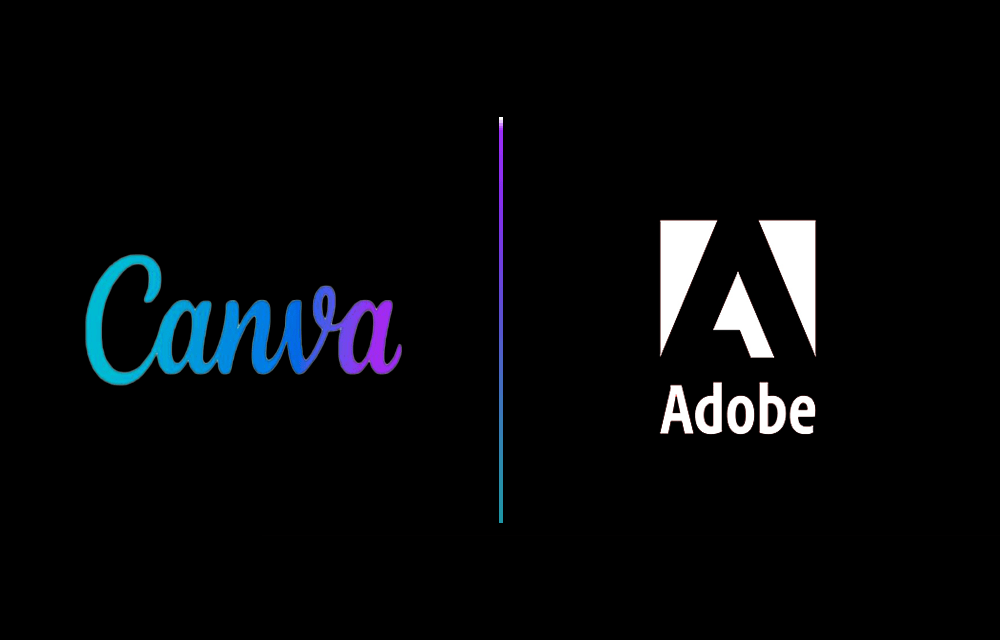canva vs adobe
Canva and Adobe are both powerful design tools but they are designed for different purposes. Canva is an online design platform for creating and sharing visuals for social media, web, and print media. It is a great choice for those who want to create professional-looking designs without a lot of technical knowledge. Adobe, on the other hand, is a suite of professional-level applications for creating and editing graphics, photos, and videos. Adobe is more suitable for creative professionals who need more advanced tools for their projects. Adobe’s Creative Cloud suite also includes a range of applications for web design, video editing, and animation.
Overall, Canva is a great choice for those who are just getting started with design, while Adobe is the better choice for experienced professionals. Canva is also much more affordable than Adobe and includes a range of features that make it easier to create graphics quickly. Adobe, on the other hand, requires a subscription and the cost can add up quickly. Both platforms have a range of features, but Adobe offers more advanced tools for professional designers.
In conclusion, Canva is a great choice for those who need to create visuals quickly and don’t have a lot of experience. Adobe is a better choice for experienced professionals who need more advanced tools for their projects.

Canva and Adobe are two popular design software options that are used by many individuals and businesses for graphic design, web design, and other visual content creation. Here are 25 paragraphs highlighting the similarities and differences between Canva and Adobe:
- Canva is a web-based design tool that allows users to create various types of visual content, including social media graphics, flyers, posters, and presentations.
- Adobe is a software company that offers a range of creative tools, including Photoshop, Illustrator, InDesign, and more, that are used for graphic design, web design, video editing, and other creative projects.
- Canva offers a user-friendly interface with pre-designed templates and drag-and-drop functionality, making it easy for beginners to create professional-looking designs.
- Adobe offers more advanced design features and tools that are better suited for experienced designers or those who are willing to invest time in learning the software.
- Both Canva and Adobe offer a variety of templates and design elements that can be customized to create unique designs.
- Canva’s library of design templates and elements is more limited compared to Adobe’s vast collection of assets and resources.
- Canva’s pricing structure is subscription-based and offers a free version with limited features, while Adobe offers both subscription and one-time payment options for its software.
- Canva’s subscription plans are more affordable compared to Adobe’s, which can be expensive depending on the specific tools and features needed.
- Canva has a mobile app that allows users to create designs on-the-go, while Adobe offers mobile apps that are more geared towards specific design functions, such as Adobe Spark for social media graphics and Adobe Lightroom for photo editing.
- Canva is cloud-based, which means that users can access their designs from anywhere with an internet connection, while Adobe requires installation on a device and saves files locally.
- Canva allows users to collaborate with team members and share designs easily, while Adobe offers more robust collaboration features with its Creative Cloud subscription service.
- Canva offers a simpler design interface that is more accessible to non-designers or beginners, while Adobe’s interface can be overwhelming for some users.
- Adobe offers more advanced design features, such as layer masks, vector tracing, and advanced typography tools, that are not available in Canva.
- Canva offers a wide range of integrations with other tools and platforms, including Dropbox, Google Drive, and social media platforms, while Adobe has integrations with a range of third-party plugins and applications.
- Canva’s customer support is primarily available through email and chat, while Adobe offers phone support, community forums, and tutorials.
- Both Canva and Adobe offer extensive training and resources, including online courses, tutorials, and webinars, to help users improve their design skills.
- Canva offers a design school with free courses and tutorials for beginners, while Adobe offers certification programs for those who want to demonstrate their proficiency in using its tools.
- Canva’s designs are limited to a maximum resolution of 96 dpi, which can be a disadvantage for users who need high-quality, print-ready designs.
- Adobe offers a range of export options and file formats, including PDF, EPS, and SVG, which are better suited for print and web design projects.
- Canva’s library of stock images and graphics is more limited compared to Adobe’s extensive collection of stock assets and third-party integrations.
- Adobe offers more customization options for its tools, including keyboard shortcuts, interface settings, and workspace layouts.
- Canva’s design elements and templates are created by its own in-house team, while Adobe offers a range of third-party plugins and assets that can be integrated into its software.
- Canva’s design process is more streamlined and

